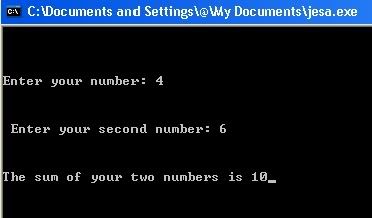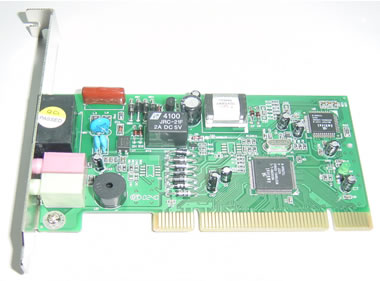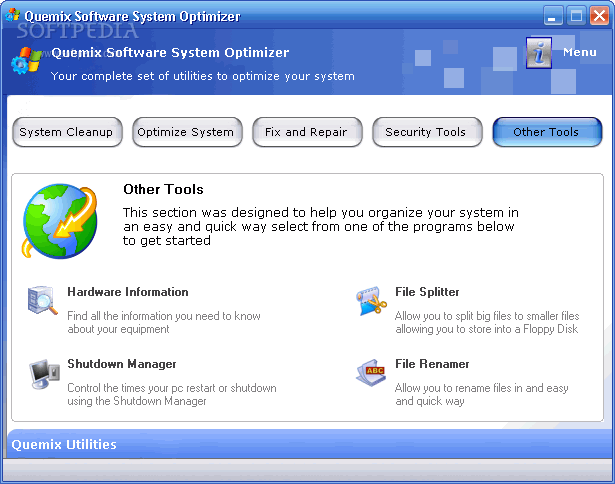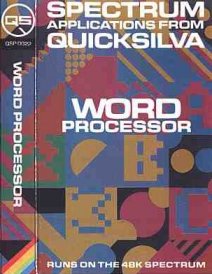Wednesday, August 29, 2007
A microprocessor is a programmable digital electronic component that incorporates the functions of a central processing unit (CPU) on a single semiconducting integrated circuit (IC).
# CSIC Chips
A complex instruction set computer (CISC) is a microprocessor instruction set architecture (ISA) in which each instruction can execute several low-level operations, such as a load from memory, an arithmetic operation, and a memory store, all in a single instruction. The term was retroactively coined in contrast to reduced instruction set computer (RISC).
# RISC Chips
Reduced Instruction Set Computer, a type of microprocessor that recognizes a relatively limited number of instructions. Until the mid-1980s, the tendency among computer manufacturers was to build increasingly complex CPUs that had ever-larger sets of instructions.
*MEMORY CHIPS*
A RAM microchip that can be plugged into a computer to provide additional memory micro chip, microchip, microprocessor chip, silicon chip, chip - electronic equipment consisting of a small crystal of a silicon semiconductor fabricated to carry out a number of electronic functions in an integrated circuit
#Kinds of Memory Chips
>RAM is Random Access Memory
Actually, should be Read Write Memory, but RWM doesn't sound as good. RAM can be written to or read from. It is volatile, that is, when the power goes off data stored in RAM goes away. ROM is programmed at the factory and is non-volatile.
> DIMM (Dual Inline Memory Module)
A memory module comprised of a printed circuit board (PCB), memory chips, and gold leads. Sends a 64-bit path of data, so DIMMs can be installed individually. This is in contrast to earlier SIMMs, which only sent a 32-bit path of data to a 64-bit CPU, requiring SIMMs to be installed in pairs.
>DRAM (Dynamic Random Access Memory)
Computer memory that stores information to be used by the CPU. Dynamic memory can only store data for a short period of time, at which point it needs to be refreshed with a new pulse of electric charge, or the data is erased from the memory. Information is not stored in DRAM when the system is powered down.
*EXPANSION SLOTS*
A long narrow socket in a computer into which an expansion card can be inserted. A receptacle inside a computer or other electronic system that accepts a printed circuit board. The number of slots determines future expansion.
# Kinds or Typpes of Expansion Slots
>ISA
Is a printed circuit board that can be inserted into an expansion slot of a computer motherboard to add additional functionality to a computer system. One edge of the expansion card holds the contacts (the edge connector) that fit exactly into the slot. They establish the electrical contact between the electronics (mostly integrated circuits) on the card and on the motherboard.
>EISA
PC bus standard that extends the 16-bit ISA bus (AT bus) to 32 bits and provides bus mastering.
>IDE
A hardware interface widely used to connect hard disks, optical disks and tape drives to a PC. Introduced in 1986 with 20MB of storage, capacities increased a thousandfold in less than two decades. Compared to the SCSI interface, IDE has been the more economical choice.
*BUS ARCHITECTURES*
Is a subsystem that transfers data or power between computer components inside a computer or between computers, and a bus typically is controlled by device driver software. Unlike a point-to-point connection, a bus can logically connect several peripherals over the same set of wires. Each bus defines its set of connectors to physically plug devices, cards or cables together.
#Three main Bus Architectures
>ISA (Industry Standard Architecture):
ISA is pronounced i- suh. This is the original PC bus architecture. It includes the 8-bit (PC, XT) and 16-bit (AT) buses in IBM personal computer series and compatibles. Now, it refers specially to the 16-bit AT bus.
>MCA (Micro Channel Architecture):
A 32-bit bus used in IBM P/S 2 series and other IBM models. This architecture allows multiprocessing that allows several processors to work simultaneously. Micro channel architecture is not compatible with PC bus architecture.
>EISA (Extended Industry Standard Architecture):
EISA is pronounced eesa. This is a bus standard for PCs that extends the AT bus (the ISA bus) architecture to a 32-bit bus. This architecture also allows more than one CPU to share the bus. The purpose of EISA is to extend and amend the old ISA standard, so that all existing AT expansion boards can work with an EISA slot.
Wednesday, August 22, 2007
EXERCISE 1-Pre-Final
-is a non-volatile storage device which stores digitally encoded data on rapidly rotating platters with magnetic surfaces. Strictly speaking, "drive" refers to a device distinct from its medium, such as a tape drive and its tape, or a floppy disk drive and its floppy disk. Early HDDs had removable media; however, an HDD today is typically a sealed unit with fixed media.
The Platters
-A hard disk platter (or disk) is a component of a hard disk drive: it is the circular disk on which the magnetic data are stored. The rigid nature of the platters in a hard drive is what gives them their name (as opposed to the flexible materials which are used to make floppy disks). Hard drives typically have several platters which are mounted on the same spindle.
Spindle/Motor
-The spindle motor, also sometimes called the spindle shaft, is responsible for turning the hard disk platters, allowing the hard drive to operate. The spindle motor is sort of a "work horse" of the hard disk. It's not flashy, but it must provide stable, reliable and consistent turning power for thousands of hours of often continuous use, to allow the hard disk to function properly. In fact, many drive failures are actually failures with the spindle motor, not the data storage systems. Spindle is the axis on which the platters of a computer hard disk spin. Database performance can be improved by spindling, the action of mounting data files and index files on different hard disks so that contention for read or write resources is diminished.
The read/Writer Heads
- Disk read/write heads are mechanisms that read data from or write data to disk drives. The heads have gone through a number of changes over the years.
Ribbon Cable
-A ribbon cable (also known as multi-wire planar cable) is a cable with many conducting wires running parallel to each other on the same flat plane. As a result the cable is wide and flat rather than round. Its name comes from the resemblance of the cable to a piece of ribbon (which is likewise wide and flat).
Base Casting
-The bottom of the disk is often called the base casting, the name coming from the manufacturing process used to create the single piece of aluminum from which it is normally made. The drive mechanics are placed into the base casting, and another piece of usually aluminum is placed on top to enclose the heads and platters. A rubber gasket is placed between the base and cover to ensure a tight seal. On some drives, a metallic tape seal is applied around the perimeter of the drive to fully enclose the drive. The exact shape of the base and cover can vary significantly from drive to drive.
*Motherboard*
-is the central or primary circuit board making up a complex electronic system, such as a modern computer. It is also known as a mainboard, baseboard, system board, or, on Apple computers, a logic board, and is sometimes abbreviated as mobo.
IDE Connector
-Most motherboards have two IDE connectors, which allow two drives to be attached to each connector. One drive is set to master and the other drive is set to slave by using a jumper that is normally located on the back of the drive. This allows a total of four IDE devices, (or drives), to be attached to a typical computer.
Processor Socket
- widely used to describe the connector linking the motherboard to the CPU(s) in certain types of desktop and server computers, particularly those compatible with the Intel x86 architecture.
AGP
-(also called Advanced Graphics Port, often shortened to AGP) is a high-speed point-to-point channel for attaching a graphics card to a computer's motherboard, primarily to assist in the acceleration of 3D computer graphics.
PCI
-is a computer expansion card interface format. It was designed to replace CI, PCI-X (interface card interface) and AGP (graphics card interface). PCIe is based around serial links called lanes.
SATA
-is a computer bus primarily designed for transfer of data between a computer and storage devices (like hard disks or optical drives).
South Bridge
-The south bridge is often referred to as the I/O controller. The features of the south bridge change less often than the those of the north bridge. From chipset to chipset, nearly all south bridges have support for integrated sound, LAN and modem, ATA and USB.
Memory
-Memory refer to computer components, devices and recording media that retain digital data used for computing for some interval of time. Computer storage provides one of the core functions of the modern computer, that of information retention.
*Monitor*
-A computer display device. A computer programming utility for examining and modifying memory-resident machine code programs. A programming interface for synchronising concurrent access to a set of variables in a computer program. A hardware device that measures electrical events such as pulses or voltage levels in a digital computer.
*System Unit*
-The main part, processing unit and devices, of a microcomputer is a system unit.
*Keyboard*
-is a peripheral partially modelled after the typewriter keyboard. Keyboards are designed for the input of text and characters and also to control the operation of a computer.
*Printer*
-produces a hard copy (permanent human-readable text and/or graphics) of documents stored in electronic form, usually on physical print media such as paper or transparencies.
*Mouse*
-functions as a pointing device by detecting two-dimensional motion relative to its supporting surface. Physically, a mouse consists of a small case, held under one of the user's hands, with one or more buttons.
Tuesday, July 24, 2007
# Hardware
Computer hardware is the physical part of a computer, including the digital circuitry, as distinguished from the computer software that executes within the hardware. The hardware of a computer is infrequently changed, in comparison with software and data, which are "soft" in the sense that they are readily created, modified or erased on the computer. Firmware is a special type of software that rarely, if ever, needs to be changed and so is stored on hardware devices such as read-only memory (ROM) where it is not readily changed (and is, therefore, "firm" rather than just "soft").
# Software
Computer software, consisting of programs, enables a computer to perform specific tasks, as opposed to its physical components (hardware) which can only do the tasks they are mechanically designed for. The term includes application software such as word processors which perform productive tasks for users, system software such as operating systems, which interface with hardware to run the necessary services for user-interfaces and applications, and middleware which controls and co-ordinates distributed systems.
# Peopleware
Peopleware is a popular book about project management. The first chapter of the book claims, "The major problems of our work are not so much technological as sociological in nature." The book approaches sociological or 'political' problems such as team 'jelling', quiet in the work environment, and the high cost of turnover. Peopleware - Productive Projects and Teams (ISBN 0-932633-43-9) is a popular 1987 book, written by software consultants Tom DeMarco and Timothy Lister, on the inside world of software developing teams, in a manner such as to highlight the real-world conflicting natures between individual work perspective and corporate ideology. Topics include team jelling, group chemistry, corporate entropy, flow time, "teamicide" and workspace theory (for optimization).
Thursday, July 19, 2007
EXAM: CSCIO1-EF
My Authobiography

Name: Jessa Mae A. Lapidez
Age: 17 years old
Address:Km. 21 Budbud Buhisan Tibungco Davao City
Birthdate: January 6, 1990
Birthplace: Davao City
Guardian/Parents: Mr. Efren L. Lapidez and Mrs. Teresita A. Lapidez
Siblings: Jesun L. Lapidez, Jalynn L. Lapidez and Jesyl Lou L. Lapidez
Hobbies: Texting, reading pocketbooks or ency... experimenting desserts
Interest: Many to mention
Who I want to meet: All people if possible.....especially those person that are jolly, friendly, kind, approachaeble and ofcourse those people who are not "plastic" and boastful.....!!!!
Motto: "Live Life to the Fullest", "be Happy" and Don't problem the problem let the problem problem you....!"
*************************************************************************************
*My C++ Code and it's Output*
#include
#include
main()
{int a,b,sum;
printf("\n\n\n Enter your number:");
scanf("%d",&a);
printf("\n\n Enter your second number:");
scanf("%d",&b);
sum=a+b;
printf("\n\n\n The sum of your two numbers is %d.");
getch();
}

Tuesday, July 17, 2007
* Hardware
Your computer's hardware is comprised of the devices that are part of your computer system- like the monitor, the speakers, and the motherboard.

Motherboard
The motherboard is one of the most important parts of your computer system! It is a complex array of wires, cables, and transistors. The most vital parts of your computer are located on your computer's motherboard.

Storage Devices Your computer needs to have a place to store all of the data and information it is given. Your computer won't have enough space in its random-access memory for all of this information. That is why there are additional storage devices.

Input/Output Devices
To let you, as the user, communicate with your computer, there are special input/output devices. Input devices let you input data into your computer, while output devices take your computer's computations and send them to you.

Audio Devices
There are a few special hardware devices that are specifically designed to work with sound. These devices can take sound waves and manipulate them in many ways.

Modems
One of the major reasons why people use computers is to access the Internet. Modems let you connect your computer with the millions of other computers in the Internet.

Connecting Cables
With so many different devices that can be connected to your computer, there'd have to be connecting cables. These cables connect devices like your printer or scanner to the computer system.

* Software
Software is the term that describes the instructions given to the computer so that it will know what tasks and operations to carry out! There is no real tangible form for software, like there is for a computer's hardware.

System Software
System software controls the computer's functions, as well as important peripherals like printers, monitors, and certain storage devices.

Operating System
The most important type of system software is the operating system. The operating system acts as an overseer over the whole computer system. Some of its major tasks are to control and organize the various devices that make up the hardware of a computer system and to support application software. Application software is the second major type of software, and will be talked about later on in this section.

Programming Languages
The second type of system software comprises of the many different programming languages found throughout the computer world. Programming languages are specialized languages that computers can understand.

Application Software
Application software is the software that controls the tasks you can use your computer to carry out. It includes any kind of program that can be used to carry out the instructions that you give the computer.

Word Processor
This are software programs that can be used for writing and typing up documents. Most of you have heard of Microsoft Word. Well, Microsoft Word is a good example of a word processor.

Spreadsheets
Computers are used frequently used to perform computations and operations. Spreadsheet programs are commonly used for budgeting, forecasting, and financial analyzing. They are most often used for financial-related tasks.

Computer Games
Computers games have provided millions of people around the world with entertainment for decades. Almost everybody has played, or at least heard of, computer games. There are simple game, like Solitaire, Tetris, and Minesweeper; there are more advanced and complex games, like Doom, Sim City, and Myst.

Video Software
There are certain programs that can be used to play back videos, such as Real Player and QuickTime. These programs let you view short video clips, movie trailers, and all sorts of other cool movies.

Music Software
If you like downloading music from the Internet, and then listening to them! Well, special software is used for this task. This software can be used to first download the music.
